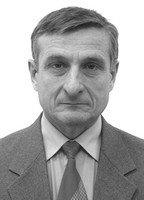Benefits of alactate training processes for elite weightlifters' training systems
Фотографии:
ˑ:
Teoriya i praktika fizicheskoy kultury №3 2017, pp.26-29
UDC 796.01:612
Dr.Hab. I.P. Sivokhin1
PhD, Professor V.F. Skotnikov2
Master, doctoral student O.Y. Komarov3
M. Tapsir4
A.I. Fedorov5
A.P. Kalashnikov6
1Kostanay State Pedagogical University, Kostanay
2Russian State University of Physical Culture, Sport, Youth and Tourism (GTSOLIFK), Moscow
3Kazakh Academy of Sports and Tourism, Almaty
4Administration of staff national teams of the Republic of Kazakhstan, Astana
5South Ural State University, Chelyabinsk
6Kostanay branch of Chelyabinsk State University, Kostanay
Objective of the study was to provide theoretical and practical experimental substantiations for the potential benefits of the alactate training process designed to model competitive conditions and environments. To rate the potential benefits of the experimental training program, we performed a 7-months-long educational experiment. Subject to the experiment were 10 elite athletes (International Class Masters of Sport and Honoured Masters of Sport) aged 20-27 years and grouped into Study and Reference Groups of virtually equal compositions, all the subjects being champions and runner-ups of the Asian and World Championships and Olympic Games. To exclude a variety of unaccountable factors, the Study and Reference Groups of 5 people each were formed on a random basis. The Reference Group was trained basically in the traditional training system, whilst the Study Group was trained as required by the experimental program of our design, with the other training conditions and pharmacological support were the same for the both groups. The study data and analyses showed benefits of the experimental programs as verified by the competitive success rates of the athletes trained with high priority being given to the alactate training tools to model as close as possible the actual competitive conditions and environments, with the relevantly focused training load vector.
Keywords: weightlifters, sport training, training process, load, statistical methods.
References
- Andryushchishin I.F. Kompleksnaya sistema psikhologo-pedagogicheskoy podgotovki sportsmenov. Ucheb. posobie [Comprehensive system of psycho-pedagogical training of athletes. Study guide]. Almaty, 2012, 332 p.
- Menshikov V.V., Volkov N.I. Biokhimiya. Uchebnik dlya in-tov fiz. kultury [Biochemistry. Textbook for phys. culture institutes]. Moscow: Fizkultura i sport publ., 1986, 384 p.: il.
- Viru A.A. Gormonalnye mekhanizmy adaptatsii k trenirovke [Hormonal mechanisms of adaptation to training]. Leningrad: Nauka publ., 1981, 155 p.
- Vorobyev A.N. Tyazheloatleticheskiy sport. Ocherki po fiziologii i sportivnoy trenirovke [Weightlifting sport. Essays on physiology and athletic training]. Moscow: Fizkultura i sport publ., 1977, 255 p.
- Gurfinkel V.S., Levik Y.S. Skeletnaya myshtsa: struktura i funktsiya [Skeletal muscle: Structure and function]. Moscow: Nauka publ., 1985, 141 p.
- Ivanov I.I., Korovkin B.F., Pinaev G.P. Biokhimiya myshts [Biochemistry of muscles]. Moscow: Meditsina publ., 1977, 343 p.
- Korzhenevsky A.N. Kompleksnaya diagnostika podgotovlennosti vysokokvalifitsirovannykh tyazheloatletov [Integrated diagnostics of fitness of elite weightlifters]. Teoriya i praktika fiz. kultury, 2012, no. 12, pp. 26-32.
- Meerson F.Z., Pshenichnikova M.G. Adaptatsiya k stressornym situatsiyam i fizicheskim nagruzkam [Adaptation to stress situations and physical loads]. Moscow: Meditsina publ., 1988, 253 p.
- Pavlov S.E. Osnovy teorii adaptatsii i sportivnaya trenirovka [Fundamentals of adaptation theory and athletic training]. Teoriya i praktika fiz. kultury. 1999, no. 1, pp. 12-17.
- Panin L.E. Biomekhanicheskie mehanizmy stressa [Biomechanical mechanisms of stress]. Novosibirsk: Nauka publ., 1981, p. 233.
- Seluyanov V.N. Nauchnye i metodicheskie osnovy razrabotki innovatsionnykh sportivnykh pedagogicheskikh tekhnologiy [Scientific and methodological basics for design of innovative sports educational technologies]. Teoriya i praktika fiz. kultury, 2003, no. 5, pp. 9-12.
- Sivokhin I.P., Ageev O.V., Orekhov L.I. et al. Izmenenie laktata na trenirovochnuyu nagruzku v mikrotsikle podgotovki tyazheloatletov [Changes in lactate to training load in weightlifter's training microcycle]. Teoriya i praktika fiz. kultury, 2012, no. 2 (29), pp. 68-73.
- Sivokhin I.P., Fedorov A.I., Ni A.G., Don L.N. Osobennosti vzaimosvyazi pokazateley tekhnicheskoy i fizicheskoy podgotovlennosti tyazheloatletov razlichnoy kvalifikatsii. Sb. nauch. tr. [Specifics of interrelation of technical and physical fitness rates of weightlifters of different skill levels. Col. res.]. Chelyabinsk: UralSAPC, CSSEC UD RAE publ., 2005, no. 8, vol. 3, 184 p.
- Turkileri E., Sivokhin I.P., Ni A.G., Don L.N. Programma mnogoletney podgotovki tyazheloatletov. Ucheb. posobie [Long-term training program for weightlifters]. Kostanay: KSPI publ., 2005, 56 p.
- Yansen Peter. ChSS, laktat i trenirovki na vynoslivost [Heart rate, lactate and endurance training]. Trans. from English. Murmansk: Tuloma publ., 2006, 160 p.
- Hakkinen K., Kauhanen H., Kuoppala T.K. Neural, muscular and hormonal adaptations, changes in muscle strength and weightlifting results with respect to variations in training during one year follow-up period of Finnish elite weigtlifters. World weightlifting, Scientific supplement, no. 3, 1987, pp. 42-428.
- Komi P.V., Hakkinen K. Strength and power. Proc. weightlifting symposium. Siofok, Hungary, 1989, pp. 159-175.



 Журнал "THEORY AND PRACTICE
Журнал "THEORY AND PRACTICE